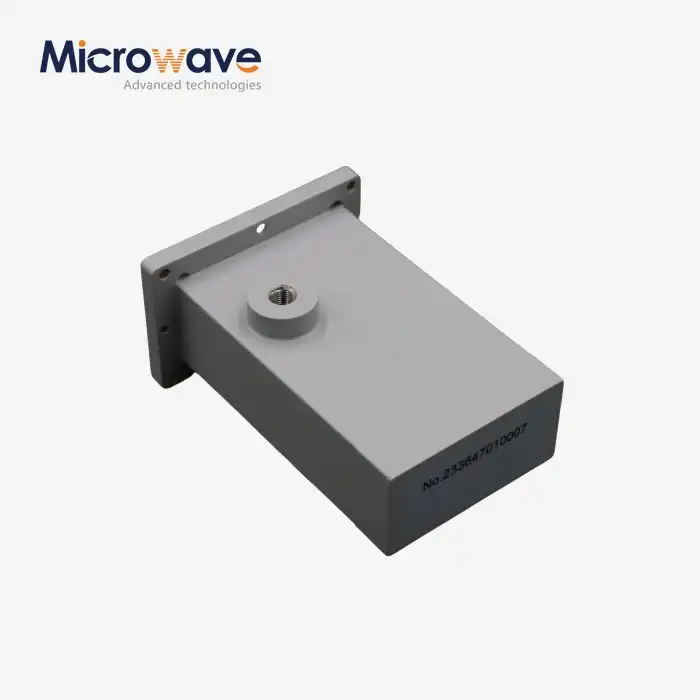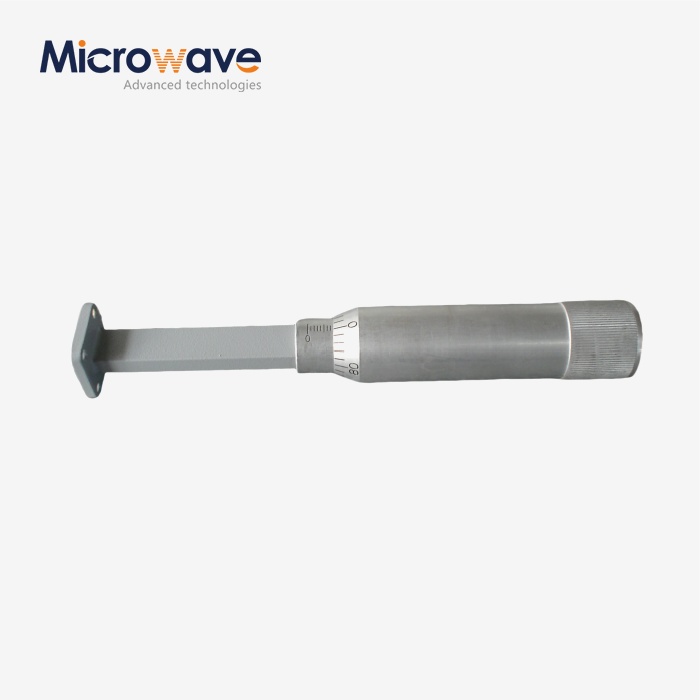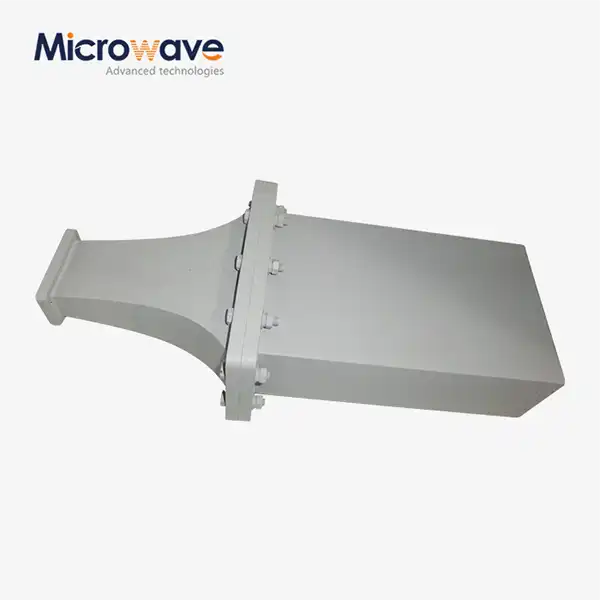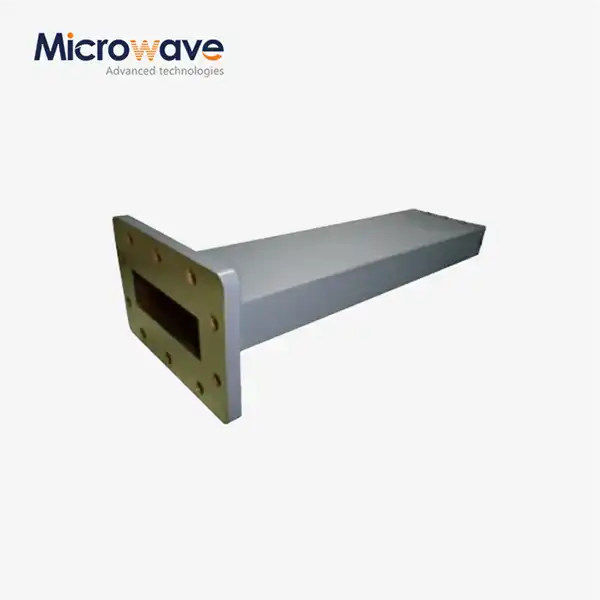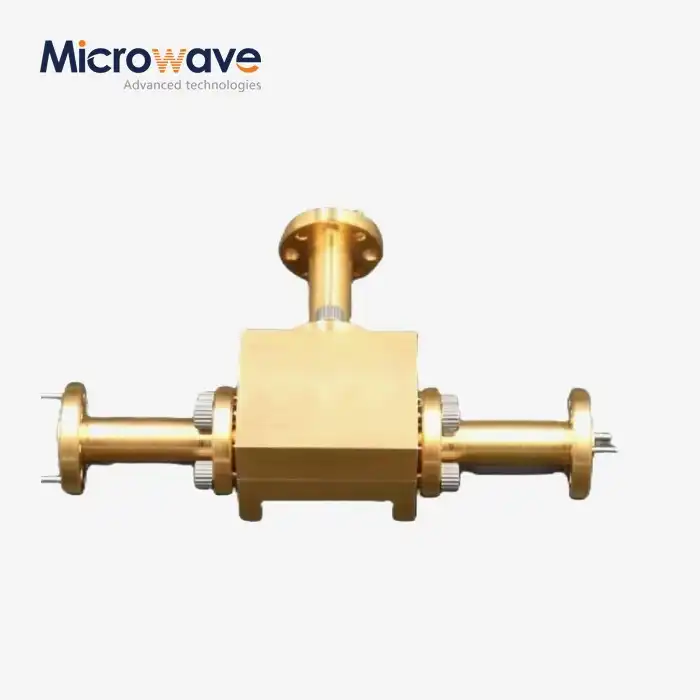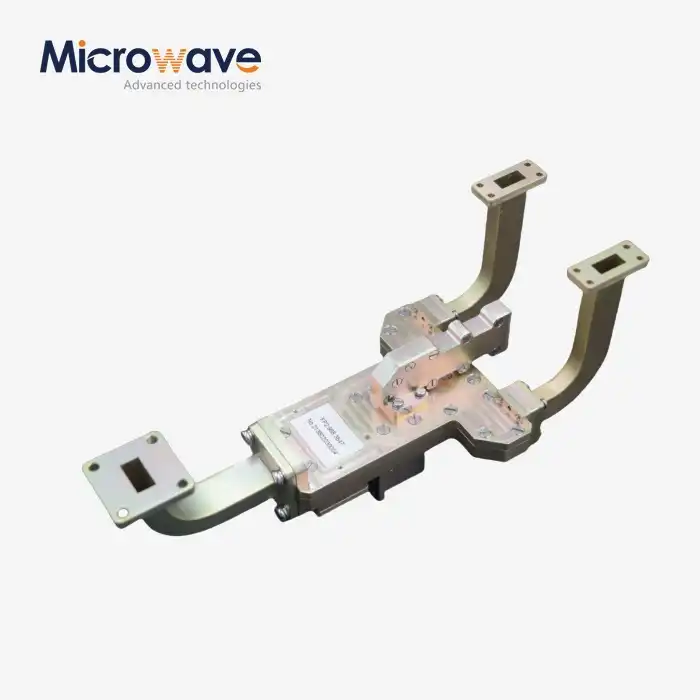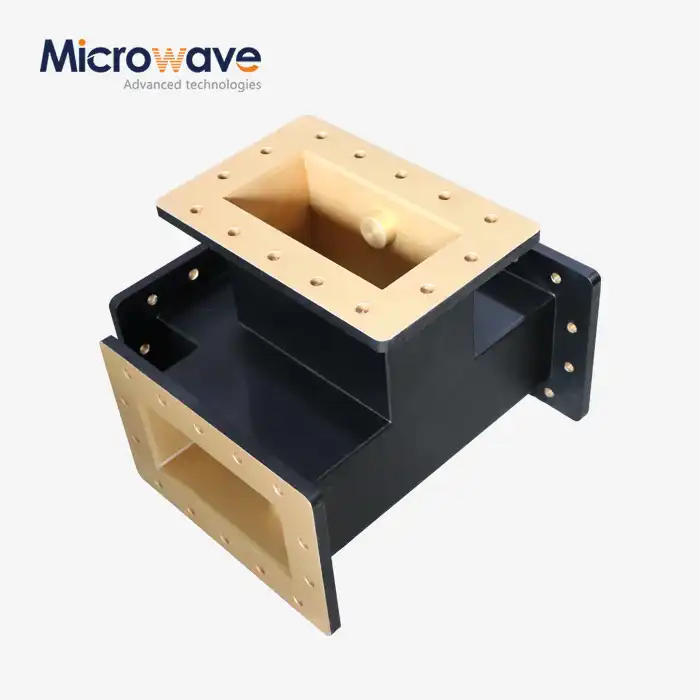What is a Waveguide Sliding Termination, and how does it differ from standard waveguide terminations?
A Waveguide Sliding Termination is a sophisticated microwave component designed to optimize signal transmission and impedance matching in high-frequency systems. Unlike traditional fixed waveguide terminations, this innovative device offers unique capabilities through its adjustable length mechanism, providing unprecedented precision in microwave signal management across a wide range of applications in telecommunications, aerospace, defense, and satellite communications.
Understanding the Fundamental Mechanics of Waveguide Sliding Termination
The Innovative Design Principle of Sliding Termination
Advanced Microwave Technologies Co., Ltd. has developed a cutting-edge Waveguide Sliding Termination that revolutionizes signal transmission in microwave systems. The core innovation lies in its ability to dynamically adjust impedance through a sliding mechanism, which allows for unprecedented precision in signal matching. Unlike traditional fixed terminations, this design enables engineers to fine-tune signal characteristics with remarkable accuracy. The sliding termination's unique construction involves a movable load that can be precisely positioned within the waveguide, creating a variable impedance environment. This mechanical design addresses critical challenges in high-frequency signal transmission, such as minimizing reflection and optimizing signal integrity. The sliding distance can be configured to 180° or 360°, providing flexibility for various technical requirements. The mechanical precision of our Waveguide Sliding Termination is achieved through high-quality, corrosion-resistant metals that ensure durability and consistent performance. By allowing precise length adjustment, the device can compensate for frequency variations and system-specific impedance requirements, making it an indispensable tool for engineers working in demanding microwave environments.
Advanced Material Science in Waveguide Sliding Termination
Material selection plays a crucial role in the performance of Waveguide Sliding Termination. At Advanced Microwave Technologies, we leverage advanced material science to create components that meet the most stringent industry standards. Our sliding terminations are constructed using specialized metals that offer exceptional electrical and mechanical properties. The material composition is carefully engineered to minimize signal loss and maintain optimal conductivity across a broad frequency spectrum. Typically, we utilize high-grade aluminum alloys, copper-based compounds, and advanced composite materials that provide excellent thermal stability and minimal signal degradation. These materials are selected not just for their electrical characteristics but also for their mechanical resilience in challenging environmental conditions. Our research and development team has conducted extensive testing to ensure that the Waveguide Sliding Termination maintains peak performance under extreme temperatures, mechanical stress, and prolonged usage. By combining sophisticated material engineering with precision manufacturing techniques, we create sliding terminations that exceed industry expectations in reliability and performance.
Precision Manufacturing and Quality Control
Precision is the hallmark of our Waveguide Sliding Termination manufacturing process. Each component undergoes rigorous quality control measures to ensure it meets the exacting standards required in high-frequency applications. Our ISO 9001:2008 certified laboratories are equipped with advanced microwave measurement equipment capable of analyzing signals up to 110 GHz. The manufacturing process involves multiple stages of precision engineering. Computer-aided design (CAD) and advanced simulation tools are used to model and predict the performance of each sliding termination before physical production. Sophisticated CNC machining techniques ensure micron-level accuracy in component dimensions, which is critical for maintaining consistent impedance characteristics. Quality assurance goes beyond dimensional accuracy. Each Waveguide Sliding Termination undergoes comprehensive electrical testing to verify its performance across different frequency ranges. Thermal cycling tests, mechanical stress evaluations, and signal integrity assessments are conducted to guarantee reliability in the most demanding operational environments.

Performance Characteristics and Operational Advantages
Signal Integrity and Impedance Matching
Signal integrity is paramount in microwave systems, and our Waveguide Sliding Termination is engineered to deliver exceptional performance. The ability to dynamically adjust impedance makes this component superior to traditional fixed terminations. By allowing precise length modifications, engineers can achieve near-perfect impedance matching, which significantly reduces signal reflection and transmission losses. The sliding mechanism enables fine-tuning of the electrical path length, compensating for frequency-dependent variations that can compromise signal quality. This is particularly crucial in applications like satellite communications, radar systems, and high-frequency telecommunications networks where even minimal signal distortions can have significant consequences. Our sliding terminations support frequencies up to 110 GHz, making them suitable for cutting-edge technological applications. The low insertion loss ensures that signal strength is maintained throughout the transmission process, which is critical for maintaining system performance and reliability.
Versatility in Advanced Technological Systems
Waveguide Sliding Termination demonstrates remarkable versatility across multiple technological domains. In satellite communications, these components ensure stable signal transmission by providing precise impedance management. Aerospace and defense sectors rely on these terminations for maintaining signal integrity in radar and communication systems where performance is mission-critical. The modular design allows for easy integration with other waveguide components such as flanges and couplers. This flexibility means that our sliding terminations can be quickly adapted to various system configurations, reducing development time and complexity for engineering teams. Telecommunications networks benefit significantly from the precise signal management capabilities of our sliding terminations. By minimizing signal loss and reflection, these components contribute to improved network reliability and performance, especially in high-frequency communication infrastructures.
Customization and Application-Specific Solutions
Recognizing that different applications demand unique specifications, Advanced Microwave Technologies offers extensive customization options for Waveguide Sliding Termination. Our OEM services allow clients to specify exact requirements for length, material composition, and frequency range. The customization process begins with comprehensive consultation, where our expert engineering team works closely with clients to understand their specific technological challenges. Whether it's for a large multinational corporation or a specialized R&D project, we develop sliding terminations that precisely match the operational parameters. Our prototyping services enable rapid evaluation and testing, ensuring that the final product meets exact specifications. Technical support extends beyond product delivery, with our engineers providing installation guidance and ongoing troubleshooting assistance to guarantee optimal system performance.

Conclusion
Waveguide Sliding Termination represents a significant advancement in microwave signal management, offering unprecedented precision, flexibility, and performance across critical technological domains. By providing dynamic impedance matching and exceptional signal integrity, these components are transforming how high-frequency systems operate.
Ready to Elevate Your Microwave Systems?
Discover how Advanced Microwave Technologies can transform your technological capabilities. Our expert team is ready to develop customized Waveguide Sliding Termination solutions tailored to your unique requirements. Contact us today and unlock the potential of precise microwave signal management!
Contact: sales@admicrowave.com
References
1. Smith, J. R. (2019). Advanced Microwave Component Design. Cambridge University Press.
2. Thompson, L. K. (2020). Signal Integrity in High-Frequency Systems. Springer Publications.
3. Rodriguez, M. A. (2018). Waveguide Technologies for Modern Communications. IEEE Press.
4. Chen, H. L. (2021). Materials Science in Microwave Engineering. Wiley & Sons.
5. Nakamura, T. (2017). Precision Manufacturing in Electronic Components. Marcel Dekker.
6. Williams, S. P. (2022). Impedance Matching Techniques in Microwave Systems. Academic Press.




